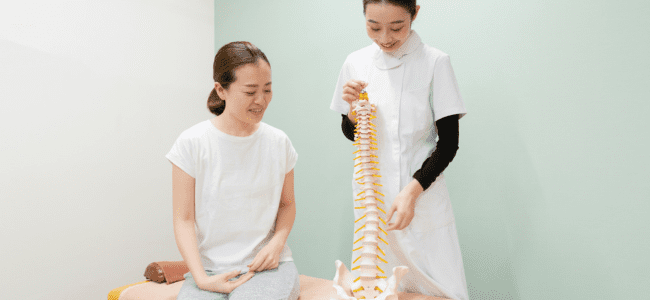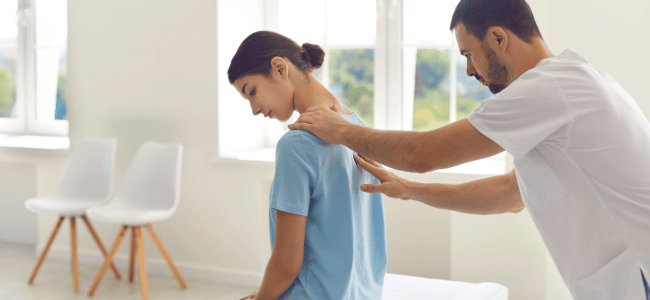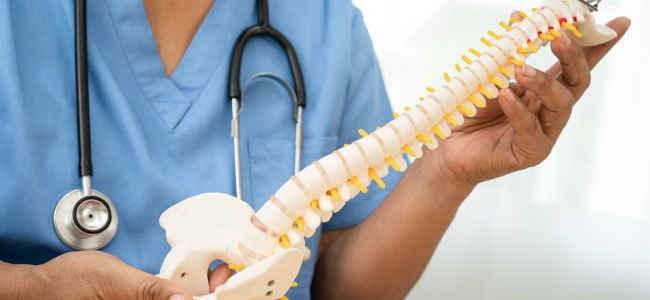What Causes Spinal Stenosis: Understanding the Root Causes and Risk Factors
Spinal stenosis occurs when the spaces within your spine narrow, putting pressure on the spinal cord and nerve roots. This progressive condition affects millions of Americans, with approximately 20% of people over 60 having lumbar spinal stenosis. Understanding what causes spinal stenosis is crucial for recognizing risk factors, preventing progression, and making informed treatment decisions.
The causes of spinal stenosis range from natural aging processes to genetic predisposition, occupational factors, and underlying medical conditions. While some causes are beyond our control, recognizing the various factors that contribute to spinal canal narrowing can help patients and healthcare providers develop effective prevention and treatment strategies.
Key Takeaways
- Age-related degeneration is the primary cause of spinal stenosis, affecting up to 95% of people over 50
• Genetic factors account for approximately 67% of stenosis susceptibility, making family history important
• Lifestyle and occupational factors including heavy lifting, poor posture, and obesity can accelerate stenotic changes
• Early recognition of symptoms allows for prompt treatment and better outcomes
Take Action for Your Spinal Health
If you’re experiencing symptoms that might be related to spinal stenosis, don’t wait for them to worsen. Understanding what causes spinal stenosis is the first step toward getting effective treatment and preventing further progression.
At Spine Team Pain Center, we’re the only group in Eastern Washington offering both interventional pain management and spine surgery services under one roof. Our fellowship-trained specialists can provide comprehensive evaluation and create a personalized treatment plan based on your specific condition and needs.
Contact us today to schedule a consultation and take the first step toward relief from spinal stenosis symptoms. Don’t let spinal stenosis limit your quality of life when effective treatments are available.
The Primary Causes of Spinal Stenosis
Age-Related Degenerative Changes
The most common cause of spinal stenosis is the natural aging process that affects spinal structures over time. Degenerative changes affect up to 95% of people by age 50, making age the single most significant risk factor for developing this condition.
As we age, several changes occur within the lumbar spine and cervical spine that contribute to canal narrowing. The intervertebral discs lose water content and height, causing vertebrae to move closer together and altering the biomechanics of the spinal column. This disc degeneration initiates a cascade of compensatory changes throughout the affected spinal segment.
The facet joints, which connect adjacent vertebrae, experience increased stress as the spine attempts to compensate for disc instability. Over time, these joints develop arthritis and become enlarged, contributing to the narrowing of the spinal canal. This process represents the body’s attempt to stabilize degenerating motion segments, but unfortunately results in reduced space for neural structures.
Ligamentum Flavum Thickening
One of the most significant contributors to spinal stenosis is the thickening of the ligamentum flavum, the elastic ligament that connects the laminae of adjacent vertebrae. The degenerative cascade involves all movement segments of the spine, with ligamentum flavum changes playing a central role in symptom development.
With aging and degenerative changes, this ligament loses its elasticity and becomes thicker and stiffer. The hypertrophied ligament can buckle inward during spinal extension, significantly reducing the available space within the spinal canal. This mechanism helps explain why patients with spinal stenosis often experience worse symptoms when standing upright or walking, as these activities naturally extend the lumbar spine.
Bone Spurs and Osteophyte Formation
Bone spurs, medically known as osteophytes, develop as the skeletal system’s response to abnormal stress patterns across spinal joints. These bony projections form where vertebral bones articulate to create facet joints, often extending into the spinal canal or neural foramina.
The formation of bone spurs represents the spine’s attempt to distribute forces more evenly across degenerating joints. However, this bone overgrowth can significantly narrow the spaces through which the spinal cord and nerve roots pass, leading to nerve compression and the characteristic symptoms of spinal stenosis.
Genetic Factors in Spinal Stenosis Development
Recent research has revealed that genetics play a much larger role in spinal stenosis development than previously understood. Studies show that approximately 67% of variance in spinal stenosis can be attributed to genetic factors, with some measurements showing even higher heritability rates.
This genetic predisposition appears to operate through multiple pathways, including influences on disc degeneration patterns, bone development, and inflammatory responses. Individuals with family histories of spinal stenosis may be at higher risk for developing the condition and may benefit from earlier screening and preventive interventions.
The strong genetic component suggests that while environmental factors like occupation and lifestyle choices matter, inherited traits significantly influence an individual’s susceptibility to developing symptomatic spinal stenosis.
Occupational and Lifestyle Risk Factors
Certain occupational activities can accelerate the degenerative changes that lead to spinal stenosis. Jobs requiring heavy lifting, prolonged standing, or repetitive bending and twisting motions place additional stress on spinal structures, potentially speeding up the development of degenerative disc disease and other stenotic changes.
Workers in physically demanding professions may experience earlier onset of symptoms and more rapid progression of spinal stenosis compared to those in less physically strenuous occupations. Poor workplace ergonomics, improper lifting techniques, and inadequate back support can all contribute to accelerated spinal degeneration.
Lifestyle factors such as obesity, smoking, and physical inactivity also contribute to spinal stenosis risk. Excess weight increases mechanical stress on the spine, while smoking impairs blood flow to spinal tissues and slows healing processes.
Congenital and Developmental Causes
Some individuals are born with constitutionally narrow spinal canals, a condition known as congenital spinal stenosis. While this accounts for only about 9% of all spinal stenosis cases, it significantly increases the likelihood of developing symptomatic stenosis at a younger age.
Congenital conditions such as achondroplasia, spina bifida, and other spinal dysraphisms can create intrinsically narrowed spinal dimensions. Additionally, scoliosis and other spinal deformities can alter normal spinal mechanics, leading to accelerated degenerative changes and stenosis development.
Traumatic Injuries and Secondary Causes
Traumatic injuries to the spine can directly narrow the spinal canal or initiate degenerative processes that eventually lead to stenosis. Car accidents, falls, and other high-energy trauma can cause vertebral fractures, ligament disruption, or spinal instability that compromises canal dimensions.
Even surgical trauma can contribute to stenosis development through post-operative scarring and tissue changes. Previous spine surgeries may alter normal biomechanics and accelerate adjacent segment degeneration.
Various medical conditions can also cause or contribute to spinal stenosis, including rheumatoid arthritis, ankylosing spondylitis, Paget’s disease, and space-occupying lesions such as tumors or cysts.
The Role of Inflammation and Vascular Factors
Understanding the vascular mechanisms behind spinal stenosis symptoms helps explain why anatomical narrowing translates into clinical problems. When patients assume upright postures or walk, the spinal canal naturally narrows further while the metabolic demands of nerve roots increase.
The compressed neural structures experience reduced blood flow while facing increased metabolic demands, creating a supply-demand mismatch that results in neural ischemia and the characteristic neurogenic claudication symptoms.
This vascular component explains why symptoms typically develop with activity and resolve with rest, as sitting or lying down reduces both the mechanical compression and the metabolic demands of the nerve roots.
Prevention and Risk Modification
While some causes of spinal stenosis, such as genetic predisposition and natural aging, cannot be prevented, several modifiable risk factors allow for preventive interventions. Maintaining a healthy weight reduces mechanical stress on the spine, while regular exercise helps preserve spinal flexibility and muscle strength.
Proper ergonomics at work and home, good lifting techniques, and avoiding prolonged positions that stress the spine can help slow degenerative changes. Smoking cessation improves blood flow to spinal tissues and supports healing processes.
For individuals with strong family histories of spinal stenosis, early screening and proactive spine health measures may help identify problems before they become symptomatic and allow for earlier intervention.
Understanding Your Risk
Spinal stenosis typically develops gradually over years or decades, with symptoms often beginning subtly and slowly worsening over time. The spinal stenosis symptoms most commonly include leg pain, weakness, or numbness that worsens with walking or standing and improves with sitting or leaning forward.
Recognizing the early signs of nerve compression allows for prompt medical evaluation and treatment. Patients experiencing significant pain or functional limitations that interfere with daily activities should seek evaluation from specialists who can provide comprehensive assessment and treatment recommendations.
For those experiencing symptoms, understanding the various causes helps in developing realistic expectations about treatment outcomes and long-term prognosis. While spinal stenosis is a progressive condition, many patients can achieve significant symptom relief and functional improvement with appropriate treatment.
At Spine Team Pain Center, our specialists understand the complex causes of spinal stenosis and offer comprehensive treatment approaches ranging from conservative management to advanced surgical techniques. Our team includes fellowship-trained surgeons with over 35 years of combined experience in treating spinal stenosis and related conditions.
Whether you need epidural steroid injections for symptom relief, help with treating sciatica symptoms, or evaluation for spine surgery options, our integrated approach ensures you receive the most appropriate care for your specific condition and symptoms.
Frequently Asked Questions About Spinal Stenosis Causes
How is spinal stenosis diagnosed?
Spinal stenosis diagnosed through a combination of clinical evaluation and advanced imaging studies. Your doctor will begin with a thorough medical history and physical exam to assess your symptoms, walking tolerance, and neurological function. Magnetic resonance imaging (MRI) serves as the gold standard for confirming the diagnosis, as it provides detailed visualization of soft tissues including the spinal cord, nerve roots, and surrounding structures. CT scans may be used when MRI is unavailable or contraindicated, while bone scans can help identify other conditions that might contribute to symptoms.
What are the treatment options when spinal stenosis treated conservatively fails?
When conservative treatments like physical therapy, anti-inflammatory medications, and steroid injections don’t provide adequate relief, surgical intervention becomes a consideration. The symptoms of spinal stenosis may warrant surgical treatment when patients experience progressive neurological deficits, severe functional limitations, or intolerable pain that prevents essential daily activities. Modern surgical options include minimally invasive decompression procedures, traditional laminectomy, and fusion techniques when instability is present. Radiofrequency neuroablation and medial branch blocks may also provide relief for certain types of stenosis-related pain.
Can spinal stenosis affect different parts of the spine?
Yes, spinal stenosis can develop in the cervical spine (neck), thoracic and lumbar spine (middle and lower back). Cervical stenosis often causes neck pain, upper extremity symptoms, and potentially balance problems due to spinal cord compression. Lumbar stenosis is more common and typically causes lower back pain, leg symptoms, and neurogenic claudication. The location of stenosis determines the distribution of symptoms, with cervical stenosis affecting the arms and hands while lumbar stenosis primarily impacts the legs and lower back.
Do nerve roots always become compressed in spinal stenosis?
While nerve compression is common in spinal stenosis, the degree and pattern of compression varies significantly between patients. The spinal nerves can be affected at different levels, with some patients experiencing compression of individual nerve roots while others have more generalized compression of the entire cauda equina. The sciatic nerve, formed by multiple nerve roots in the lower spine, is commonly affected in lumbar stenosis, leading to radiating leg pain and weakness in one or both legs.
What role do spinal discs play in causing stenosis?
Spinal discs contribute to stenosis development through multiple mechanisms. As discs degenerate and lose height, the spinal canal dimensions decrease and neural foramina narrow. Disc bulging or herniation can directly occupy space within the canal, while the loss of disc support leads to increased stress on facet joints and ligaments, promoting their hypertrophic changes. Degenerative disc disease initiates a cascade of changes that ultimately results in multi-level stenosis affecting various spinal structures.
How do doctors determine if stenosis is causing pain versus other spinal conditions?
Healthcare providers distinguish stenotic pain from other conditions through careful evaluation of symptom patterns, response to positional changes, and imaging findings. A thorough physical exam and detailed medical history help identify the characteristic neurogenic claudication pattern. Advanced imaging reveals the specific anatomical abnormalities, while sometimes additional tests like electromyography assess nerve function. The combination of clinical symptoms, examination findings, and imaging results allows doctors to determine whether significant pain stems from stenosis or other spinal disorders, guiding appropriate treatment selection.


